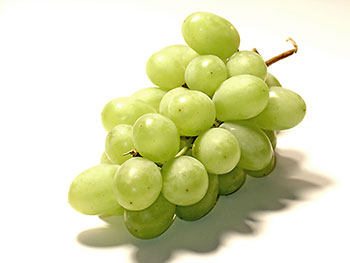More Health and Nutrition Bites
Related
Is it true that I shouldn't eat fruit for 30 minutes before or after a meal?
The ideas of timing of fruit (as well as a lot of other ingredients) in weight loss are myth. I am not sure how these old wives' tales get started, but there's no science to support these concepts.
Can I eat all the fruits and vegetables I want and still lose weight?
While you can and should snack, I don't think that you should eat all you want. Your idea of eating fruit is great but keep an eye on the calories. Snacking is really important to keep you from being hungry and your choice of fruits is a great one.
More Fruit, Less Junk
There's a lot of concern about childhood obesity, and justifiably so: over 1 in 3 children (including adolescents) are at least overweight, if not obese. The Centers for Disease Control estimates that as of 2008, 20% of children between the ages of 6 and 11 are obese, while 18% of kids 12-19 are obese. They develop risk factors for heart disease that my pediatrics colleagues hardly ever saw thirty years ago, including high cholesterol, high blood pressure, and prediabetes (if not diabetes itself).
Health & Nutrition Bites
Get the latest health and diet news - along with what you can do about it - sent to your Inbox once a week. Get Dr. Gourmet's Health and Nutrition Bites sent to you via email. Sign up now!
How to get your kids to eat more fruit

I've written before about how few children and adolescents are eating their recommended five servings of fruit and vegetables per day (Adolescents low in fruits and vegetables, 2/7/07). Researchers at Yale University recently discovered a simple way to get kids to eat more fruit (Int J Beh Nutr Phys Act 2007).
They selected two elementary schools in the same school district to participate in the study. Both schools had a similar racial mix of students, had substantially similar family income levels, and the fourth-grade students received about the same scores on a state-sponsored educational achievement test.
Both schools' cafeterias regularly offered the students a choice of two different types of fruit and at least one type of 100% juice each day as part of their regular lunch. In one school, as the children were passing through the line, the cafeteria workers said to each child, "Would you like fruit or juice?" While the question sounds as though the child is expected to take one or the other, if the child said that they did not want fruit or juice, the cafeteria worker was not to prompt the child further. In the other school, the cafeteria workers said nothing.
The children at each school were monitored to see how many took fruit or juice, and of those, how many actually ate (or drank) the fruit. The researchers found that those children who were prompted were two to three times more likely to take a piece of fruit than the children who were not prompted, but this did not apply to juice. Of those children who did take the fruit, at either school, overall about 80% of them ate it rather than throwing it away.
What this means for you
This study suggests that if your child has fruit on his or her plate, chances are she'll eat it. If you pack your child's lunch, include a piece of fruit or a fruit cup. And maybe an extra as a snack! You might try the same tactics with vegetables: cut up carrots, celery, fresh broccoli or asparagus - whatever your child enjoys.
First posted: March 21, 2007
